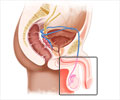- New maternal blood test predicts with 75-80% accuracy, women at risk of entering into preterm labor
- Currently there are no accurate tests or means to identify or predict those women at risk of going into preterm labor
- Premature birth, refers to babies born before 37 weeks of pregnancy, and affects approximately 9 percent of births in the US. Preterm babies suffer from several complications including increased mortality risk
Accurate and Inexpensive Tests To Predict Preterm Labor and Estimate FetalGestational Age – Need of the Hour
- Currently doctors lack reliable tests or methods to accurately predict women at risk for preterm labor and the problem continues to be a major cause of infant mortality worldwide. In two-thirds of cases, women spontaneously go into preterm labor and the doctors are unable to find the reason.
Previously available tests were only employed in high-risk women, such as those who had already had a history of preterm labor, and accuracy rate was just 20 percent.
- Additionally, the team feel that better and cheaper tests are required to correctly estimate fetal gestational age. Currently ultrasound scan in the first trimester is performed to estimate the woman’s expected due date but the accuracy decreases with gestational age and therefore scans are not reliable in women who have not received early antenatal care. Also ultrasound scanning requires costly equipment and trained personnel which may not be readily available in low resource settings.
Details of Study – Predicting Preterm Labor And Estimating Fetal Age
Estimating Gestational Age of Fetus (baby in the womb)
- The test to estimate gestational age was developed by studying a cohort of 31 Danish women who gave their blood every week throughout their pregnancies. All the women had full-term pregnancies.
- First, the team used blood samples from 21 of these women to develop a statistical model, which identified nine cell-free RNAs formed by the placenta that could predict gestational age, and validated the model using blood samples from the remaining 10 women.
- The accuracy of the estimating fetal gestational age was 45 percent, which is comparable to 48 percent accuracy for first-trimester ultrasound estimations.
Predicting Preterm Birth
- To predict risk of preterm birth, the scientists used blood samples from 38 American women who were at risk for premature delivery because they had a previous history of preterm delivery or had suffered from premature contractions already
- Each of these women gave one blood sample either during the second or third trimester of their pregnancies.
- Of this group, 13 women delivered preterm, and the remaining 25 delivered at term.
- The scientists demonstrated that levels of cell-free RNA from seven maternal and placental genes could correctly predict those pregnancies that would end early
Future Plans
- The team plan to validate these new blood tests in larger numbers of pregnant women before they can be made available for routine clinical use
- They plan to further elucidate the roles of genes associated with preterm labor and gain deeper insight into the reasons for the event
- The scientists also plan to identify drug targets that could prevent or delay preterm births
- Blood Test Provides More Accurate Prenatal Testing For Down Syndrome - (https://www.npr.org/sections/health-shots/2014/02/26/282095202/blood-test-provides-more-accurate-prenatal-testing-for-down-syndrome)
- Risk of Preterm Birth Reliably Predicted by New Test - (https://www.ucsf.edu/news/2018/05/410456/risk-preterm-birth-reliably-predicted-new-test)















